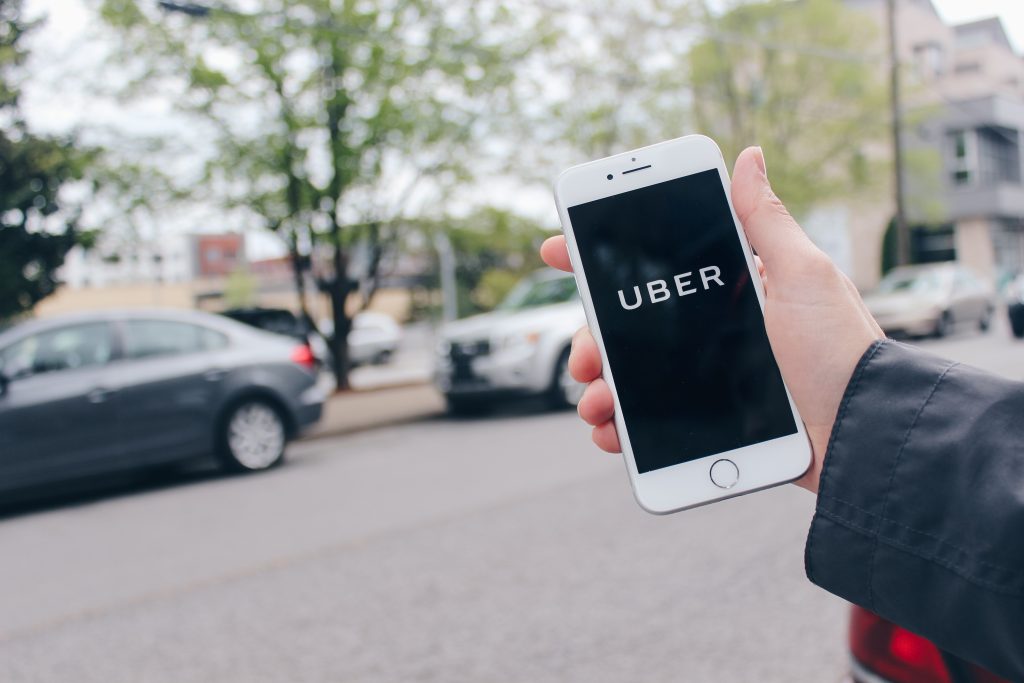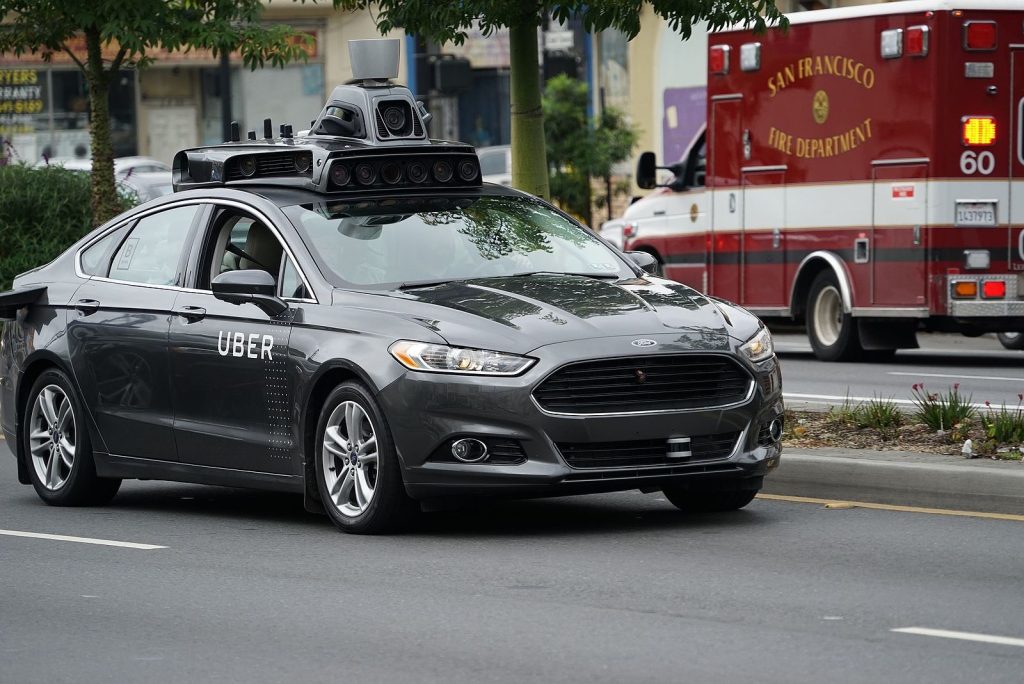
“uber” by stockcatalog is licensed under CC BY 2.0.
Introduction
The sharing economy, as defined by Matofska and Sheinwald (2020), is an economic model where individuals and groups collaboratively share goods and resources, effectively converting physical assets into services, thereby optimising resource utilisation. Fuelled by advanced information technology, the sharing economy has swiftly emerged as a pivotal force shaping contemporary society and the business landscape.
Notably, in sectors such as transportation and hospitality, innovative companies like Uber and Airbnb have successfully embraced this business model, propelling the rapid growth of the sharing economy (Lee et al., 2018). For instance, Uber’s valuation reached $68 billion by the end of 2015, surpassing established automotive companies like Honda and General Motors (Yu et al., 2020). However, this remarkable growth in the sharing economy faces substantial challenges, including issues related to regulatory uncertainty and misuse.
This report is to examine Uber, a ride-hailing software, as a case study to analyse the advantages and disadvantages of the sharing economy concept and its practical implementation within the social economy.
Improving the Utilisation of Resources
The sharing economy offers significant advantages primarily centred around the enhancement of resource allocation and utilisation efficiency.
Sharing economy platforms enable both individuals and organisations to transform idle resources into valuable assets, effectively increasing resource utilisation rates (Lee, 2018). Through these platforms, people can leverage their underutilised properties for short-term rentals, parked vehicles for ride-sharing services, and unused tools and equipment for rent to those in need.
In essence, this model eliminates prolonged resource idleness and facilitates their comprehensive utilisation, ultimately leading to improved overall resource allocation efficiency. For example, Uber serves as a prominent illustration of this concept. Uber functions as an online peer-to-peer ride-sharing platform that does not own any vehicles directly (Lee, 2018). Instead, it acts as a facilitator, connecting vehicle providers with riders and collecting a commission for each shared ride (Lee, 2018). This innovative model simplifies vehicle rental, creating a mutually beneficial sharing economy ecosystem.

“File:Self driving Uber prototype in San Francisco.jpg” by Dllu is licensed under CC BY-SA 4.0.
Consequently, more people can meet their transportation needs by sharing their existing vehicles without the necessity of purchasing new ones, thereby reducing the demand for car manufacturing and minimising resource waste.
In addition, Uber’s platform allows drivers to provide services on their terms and schedules, promoting flexible resource allocation (Leighton, 2016). This flexibility means that during peak demand hours, more drivers can join the platform to meet passenger demand, while during off-peak hours, drivers have the option to take a break, thus preventing the wastage of resources.
Uber enhances the utilisation of both drivers and their vehicles through the implementation of various innovative features, including location tracking, dynamic pricing, and carpooling (Azevedo & Weyl, 2016). These features collectively contribute to making personal transportation more efficient and convenient in comparison to traditional taxi services.
Savings in Costs (Individuals and Businesses)
The sharing economy plays a pivotal role in cost savings, benefitting both the demand and supply sides of the market (Tseng & Chan, 2021). This trend is particularly evident in the peer-to-peer market, where individuals share or rent their properties and offer various services through online platforms and social media, all rooted in trust and cooperation (Tseng & Chan, 2021). Consequently, an increasing number of people are now willing to pay for a product or service as needed.
In terms of personal cost savings, Uber allocates a significant portion of its marketing budget toward rewarding drivers and riders, rather than traditional media advertising (Tseng & Chan, 2021).
- For example, new users enjoy discounted rates on their initial Uber rides, and existing users often share their promo codes with friends, resulting in mutual discounts (Tseng & Chan, 2021).
This strategic approach not only encourages new user adoption but also leverages the sharing behavior of existing users, creating an effective user growth model that enables Uber to maintain competitiveness in a highly contested market.
Additionally, the sharing economy can significantly reduce business costs. More companies are adopting Uber for Business to simplify the management of business travel expenses (Niehrah, 2023).
With Uber for Business, companies can easily monitor employee travel records, streamline expense reimbursements, and offer convenient payment and billing options. For instance, the corporate travel manager at Palo Alto Networks, a cybersecurity company, notes that business travel expenses can rank as the second-largest cost for companies (Niehrah, 2023).
Clearly, Uber provides companies with flexible and cost-effective transportation solutions, eliminating the need to purchase, maintain, and manage a fleet of vehicles. This is particularly crucial for companies that frequently engage in business travel.
Aligning with Sustainable Development Goals (SDGs)
The sharing economy, exemplified by Uber’s model, aligns closely with the Sustainable Development Goals (SDGs), particularly in its efforts to reduce carbon emissions and alleviate traffic congestion.
- Uber’s sharing economy model employs a variety of strategies to achieve these sustainability objectives.
Firstly, Uber’s model significantly contributes to reducing air pollution and carbon emissions by diminishing personal vehicle ownership and decreasing the overall number of vehicles on urban streets.
Studies have shown that each shared car can potentially replace the need for 9 to 13 personal vehicles, as individuals who embrace shared mobility options are more inclined to divest themselves of personal cars or defer new car purchases (Pan et al., 2021). Furthermore, research by Pan et al. (2021) indicates that vehicle sharing can lead to a substantial reduction in annual vehicle trips (27-43%) and greenhouse gas (GHG) emissions (34-41%).
These findings underscore the positive impact of the vehicle sharing model in curbing transportation activity and mitigating environmental pollution.

“World Class Traffic Jam 2” by joiseyshowaa is licensed under CC BY-SA 2.0.
Uber’s sharing economy model not only fosters economic sustainability for individuals but also bolsters transport efficiency, reduces carbon emissions, encourages resource optimisation, and bolsters the overall social and economic sustainability of urban centres.
Secondly, sharing economy platforms, including Uber, leverage data analytics to provide personalised recommendations and services. These tailored services not only enhance the user experience but also elevate user satisfaction levels.
Privacy Concerns
However, consumers often express concerns about potential privacy abuses and the leakage of personal data when using sharing economy platforms.
- For instance, Uber, as a prominent example, has access to a substantial amount of information regarding user behaviour, encompassing data on drivers, customers placing orders, and passengers, including details like location and financial information (Zhang, 2019).
In such instances, companies may inadvertently track consumers online, inundate them with spam, or improperly collect and share consumer information on mobile devices (Zhang, 2019).

“Data Security Breach” by Visual Content is licensed under CC BY 2.0.
When consumers worry that their data could be accessed or misused by unscrupulous entities, it breeds distrust in sharing economy platforms, negatively impacting their willingness to use these services and eroding user loyalty.
Consequently, sharing economy platforms must prioritise the establishment of transparent and secure data processing mechanisms, coupled with clear and comprehensive privacy policies. These measures not only safeguard user data but also foster trust among users.
Conclusion
In summary, the sharing economy, as an emerging economic model, positively contributes to the Sustainable Development Goals (SDGs) by offering flexibility, convenience, and resource optimisation.
Uber’s remarkable success has played a pivotal role in enhancing the acceptance of the sharing economy paradigm. Through the reduction of personal vehicle ownership, optimisation of route planning, provision of employment opportunities, and promotion of public transport usage, the sharing economy significantly impacts environmental, economic, and social sustainability. Additionally, it furnishes individuals and businesses with more adaptable and cost-effective transportation and distribution solutions.
Nonetheless, sharing economy platforms must address issues related to personalised services and user data privacy by establishing trustworthy data processing mechanisms, ultimately enhancing user trust. Achieving long-term sustainability in the sharing economy requires a careful balance between individual needs, corporate profits, and social responsibility.
References
Azevedo, E. M., & Weyl, E. G. (2016). Matching markets in the digital age. Science (New York, N.Y.), 352(6289), 1056–1057. https://doi.org/10.1126/science.aaf7781
Lee, Z. W. Y., Chan, T. K. H., Balaji, M. S., & Chong, A. Y.-L. (2018). Why people participate in the sharing economy: an empirical investigation of Uber. Internet Research, 28(3), 829–850. https://doi.org/10.1108/intr-01-2017-0037
Leighton, P. (2016). Professional self-employment, new power and the sharing economy: Some cautionary tales from Uber. Journal of Management & Organization, 22(6), 859–874. https://doi.org/10.1017/jmo.2016.30
Matofska, B., & Sheinwald, S. (2020). What is the sharing economy? In Generation Share. Policy Press.
Niehrah, Y.-D. (2023, April 27). New report: Keeping Business travel costs in check. Skift. https://skift.com/2023/04/27/new-report-keeping-business-travel-costs-in-check/
Pan, S., Fulton, L. M., Roy, A., Jung, J., Choi, Y., & Gao, H. O. (2021). Shared use of electric autonomous vehicles: Air quality and health impacts of future mobility in the United States. Renewable and Sustainable Energy Reviews, 149(111380), 111380. https://doi.org/10.1016/j.rser.2021.111380
Yu, C., Xu, X., Yu, S., Sang, Z., Yang, C., & Jiang, X. (2020). Shared manufacturing in the sharing economy: Concept, definition and service operations. Computers & Industrial Engineering, 146(106602), 106602. https://doi.org/10.1016/j.cie.2020.106602
Tseng, Y.-C., & Chan, C.-L. (2021). When the Sharing Economy Meets Established Institutions: Uber and Airbnb in Taiwan. IEEE Transactions on Engineering Management, 68(6), 1895–1906. https://doi.org/10.1109/TEM.2019.2934520
Zhang, C. (2019). China’s new regulatory regime tailored for the sharing economy: The case of Uber under Chinese local government regulation in comparison to the EU, US, and the UK. Computer Law and Security Report, 35(4), 462–475. https://doi.org/10.1016/j.clsr.2019.03.004


Be the first to comment on "The Sharing Economy’s Impacts: A Case Study of Uber"